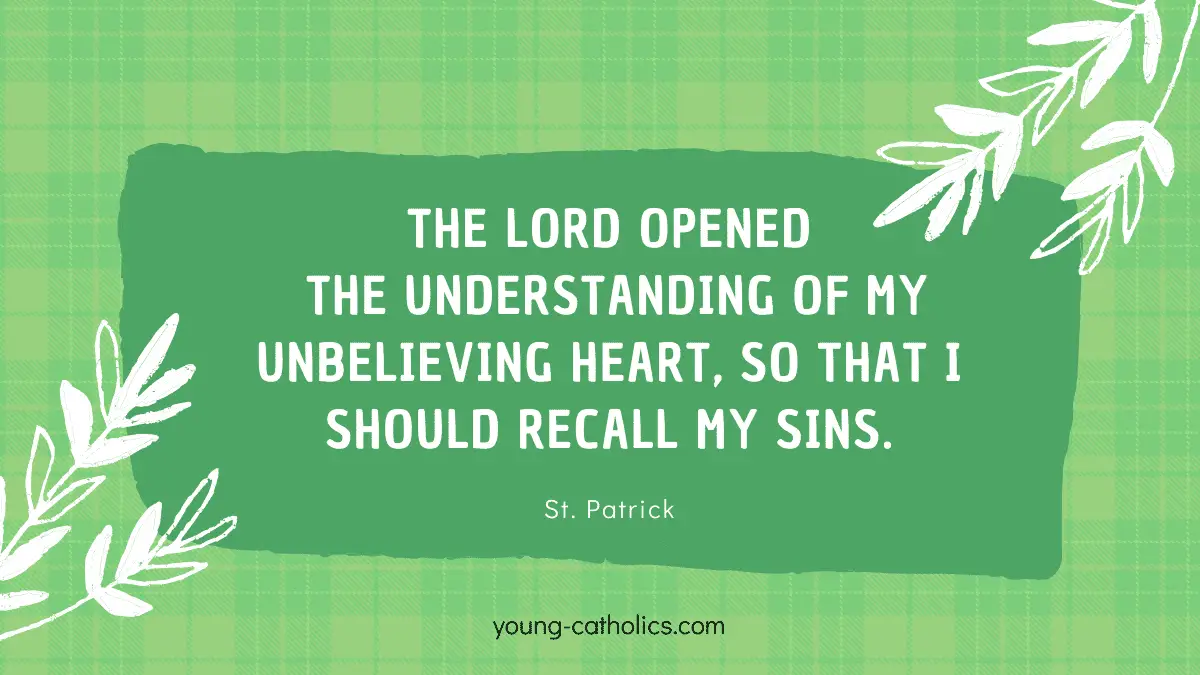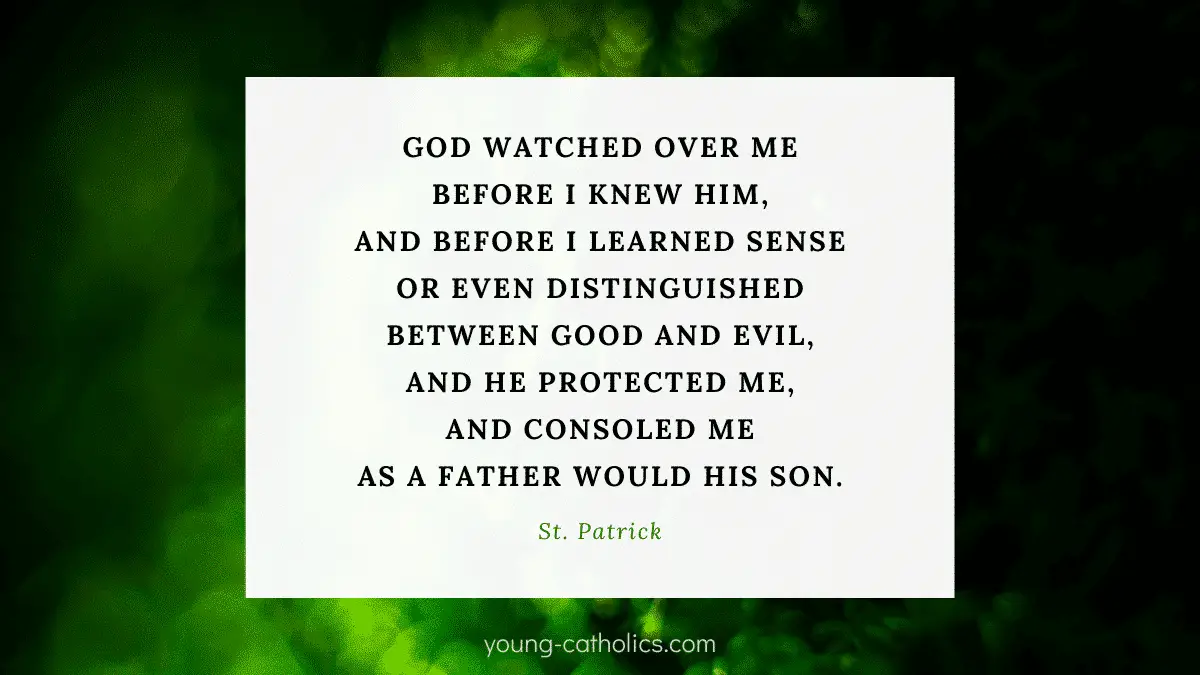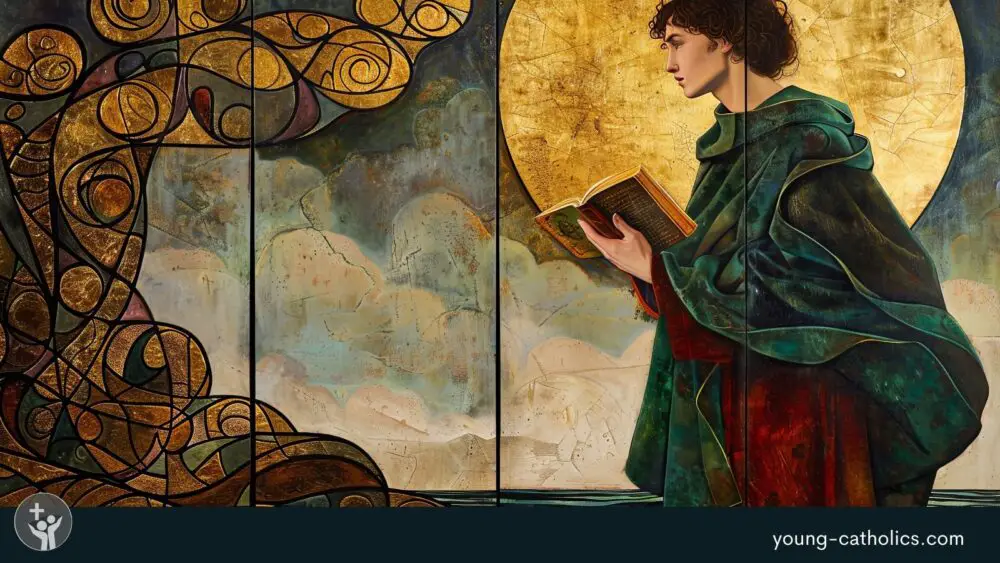
He had a reputation as a problem solver, and came up with creative ways to explain ideas. St. Patrick is famous for using the three-leafed shamrock to explain the concept of the Holy Trinity to the Irish people.
He is also credited with driving snakes out of Ireland. However, it is important to note that there is no evidence that snakes ever existed in Ireland, as the country's climate is not suitable for them to survive. It is believed that the story is a metaphor for St. Patrick's Christian teachings, which replaced the pagan beliefs that had previously been prevalent in Ireland.
Patron Saint of ...
St. Patrick is the patron saint of Ireland, engineers, and those suffering from snake bites.
Daily Mass Readings
- First Reading - 1 Peter 4:7b-11: We should be self-controlled and clear-minded in our prayers, love one another earnestly, offer hospitality without grumbling, and to use our gifts to serve one another as good stewards of God's grace. We should serve one another in these ways, and thus bring glory to God and demonstrate our faith in him.
- Responsorial Psalm - Psalm 96: All lands and nations sing to the Lord, bless his name, and proclaim his marvelous deeds. Announce his salvation day after day, tell his glory among the nations, and give him the glory and praise due his name.
- Gospel - Luke 5:1-11: Jesus calls his first disciples by performing a miraculous catch of fish. After teaching from Simon Peter's boat, Jesus tells Simon to cast his nets into the water, despite having caught nothing all night, and the resulting catch is so great that it nearly sinks their boats. Jesus tells Simon that from then on, he will catch people instead of fish, and Simon and his companions leave everything and follow him.
Homilies and Reflections
St. Patrick is one of the most well-known saints in the Catholic tradition, and his life serves as a example of faith, perseverance, and evangelization.
Born in Britain in the 4th century, St. Patrick was kidnapped by Irish raiders as a teenager and sold into slavery in Ireland. Despite his difficult circumstances, he turned to God in prayer and was eventually able to escape and return to Britain. However, he felt called by God to return to Ireland as a missionary, and he spent many years traveling throughout the country, preaching the Gospel and establishing churches.
St. Patrick's life teaches us many important lessons about what it means to be a disciple of Christ. One of the key themes of his ministry was forgiveness. Despite the fact that he had been taken captive and enslaved by the Irish, he was able to forgive his captors and even saw his captivity as a way of deepening his relationship with God. This is a powerful reminder of the importance of forgiveness in our own lives, as we seek to follow Jesus' example of extending mercy and compassion to all people.
Another important lesson from St. Patrick's life is his commitment to evangelization. He dedicated his entire life to spreading the Gospel throughout Ireland, and his efforts had a profound impact on the country's culture and history. This is a reminder that all Catholics are called to be missionaries in our own way, whether by sharing our faith with our friends and family, volunteering in our communities, or supporting the work of the Church through prayer and donations.
Finally, St. Patrick's life is a testament to the power of prayer. He was a man of deep faith and spent many hours in prayer and contemplation, seeking to deepen his relationship with God. This is a reminder that prayer is an essential part of our own spiritual lives, and that we should strive to make time for prayer and reflection each day.
Overall, the life of St. Patrick is a powerful witness to the power of the Gospel and the importance of living a life of faith and service to others. As Catholics, we can look to St. Patrick as a role model and ask for his intercession as we seek to follow Jesus more closely in our own lives.
Prayer
Heavenly Father, like Saint Patrick, help me to have a heart full of compassion for those who do not yet know you. Strengthen me with your grace and wisdom to share your love and truth with others, and to live a life that brings glory to your name.
Resources

St. Patrick’s Breastplate: Christ With Me Prayer
"Christ with me, Christ before me, Christ behind me…" This phrase is from St. Patrick's Breastplate, a prayer asking for protection and guidance. It's like wearing a shield of faith! This prayer reminds us that Jesus is always with us, no matter where we go or what we face. He's in front of us, leading the way; behind us, watching our backs; and right beside us, giving us strength and wisdom. It's a powerful way to remember that with Jesus, we're never alone or without help.
Social Media Graphics
If you use the images below in any form, you must provide attribution to young-catholics.com. See details.



Frequently Asked Questions
What date is the Optional Memorial of St. Patrick, Bishop?
It is observed annually on March 17.
The upcoming dates are
- Monday March 17, 2025
What are the Mass readings for the Optional Memorial of St. Patrick, Bishop?
First Reading - 1 Peter 4:7b-11: Live in Love and Service
Responsorial Psalm - Psalm 96: Proclaiming God's Glory Globally
Gospel - Luke 5:1-11: Miraculous Catch of Fish
Who was St. Patrick?
St. Patrick is sometimes called the Apostle of Ireland. St. Patrick is famous for using the three-leafed shamrock to explain the concept of the Holy Trinity to the Irish people.
Who is St. Patrick the patron saint of?
He is the patron saint of Ireland, engineers, and those suffering from snake bites.
Did St. Patrick really drive the snakes out of Ireland?
He is credited with driving snakes out of Ireland. However, it is important to note that there is no evidence that snakes ever existed in Ireland, as the country's climate is not suitable for them to survive. It is believed that the story is a metaphor for his Christian teachings, which replaced the pagan beliefs that had previously been prevalent in Ireland.
Why is St. Patrick the patron saint of engineers?
He had a reputation as a problem solver, and came up with creative ways to explain ideas. For example, he is famous for using the three-leafed shamrock to explain the concept of the Holy Trinity to the Irish people.
Conclusion
St. Patrick's story is not just a tale of historical significance; it is a testament to the power of faith and dedication. Through his journey from a captive youth to a revered missionary, St. Patrick showcases the incredible ways in which unwavering belief and love for God can change not just an individual, but an entire nation.
His use of the shamrock as a teaching tool emphasizes the importance of finding relatable ways to share faith, and his legendary act of "driving out snakes" symbolizes the triumph of good over evil, faith over doubt. For Catholics today, St. Patrick stands as a model of hope, perseverance, and the boundless possibilities that come from living a life deeply rooted in faith. His legacy teaches us that no matter our past or the challenges we face, with God's guidance and our own steadfast faith, we can achieve extraordinary things.
Your Turn
Let's take inspiration from St. Patrick's remarkable life as we move forward in our own spiritual journeys. Just like him, we can face our fears, overcome obstacles, and spread kindness and understanding. This week, try to be a little more like St. Patrick by forgiving someone who has wronged you, sharing a piece of your faith with a friend, or spending a few extra minutes in prayer each day. Remember, it's through small acts of love and faithfulness that we can make a big difference in our world.
And who knows? Maybe we'll inspire someone else along the way. Let's ask for St. Patrick's intercession in our lives, to guide us and help us grow closer to God, just as he did with so much courage and faith. Share your experiences in the comments below.


Leave a Reply